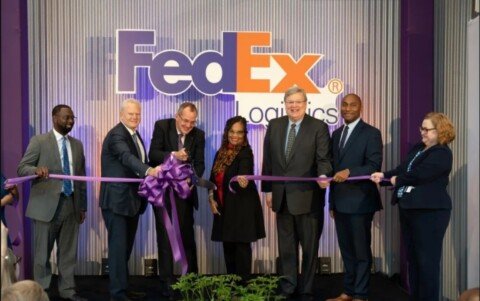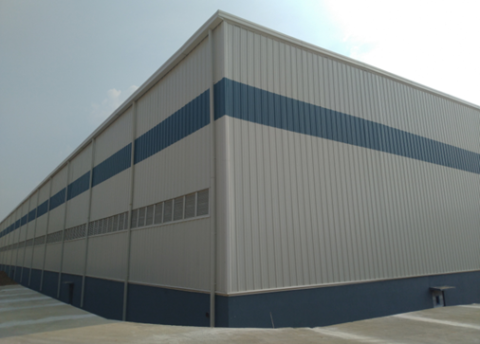The current global pandemic has turned the retail world on its head and created huge unknowns going into the future. Accelerated adoption of e-commerce, trends like same-day or next-day delivery commitments fulfiled by 3PL companies and the need to diversify supply chains are pushing demand for warehousing and logistics services in the hot spots of consumption. Although urban logistics is at a nascent and fragmented fringe state in India now, it is on the cusp of going mainstream.
Upamanyu Borah
India’s FMCG market is set to contract by -1% to -3% this calendar year, market researcher Nielsen said in its revised estimates for the sector. This is despite an estimated 3,000 products in the health and hygiene category having been launched in the September quarter alone. The ongoing pandemic has also pushed consumers to buy goods online, a habit that is likely to stick. Keeping that in view, companies are enhancing their digital capabilities and charting out strategies to ensure their presence on e-commerce. This in turn is pushing the demand for dark stores from e-commerce players in city central locations, prompting growth of urban logistics spaces.
Urban logistics spaces typically serve as dark stores, cloud kitchens, sortation centres, hybrid retail stores and micro-fulfilment centres. Urban Logistics spaces are functionally in-city facilities for last-mile delivery services of goods while multi-storey warehouses are a single location facility, either in cities or on the outskirts. Today, in-city logistics spaces are coming up in varied sizes between 5,000 sq ft and 20,000 sq ft.
Dark stores can help improve customer experience by providing easier access to essential items, and the practice could pave the way for the future of retail. Dark stores are driving efficiencies, faster delivery capabilities and reducing logistics cost as these house goods used to fulfil orders placed online, for the last-mile connectivity and have the potential of saving between 10% and 30% of logistics costs. Many wholesale distribution centre businesses at present are moving towards dark store concepts in India.
Cashing in on Opportunities
Since the lockdown began in March-end, the demand for commercial warehouse space in large cities has gone up as a breakdown in the supply of essential commodities increased the need to store daily necessities, FMCG products and electronics near major consumption centres. The rapid growth in demand for these items pushed supply chains to quickly find solutions for automation and fulfilment. A shift from retail to urban logistics is thus generating change in the demand curve for automated and sustainable spaces, encouraging e-commerce and third-party logistics players to implement micro-fulfilment technology to maximise efficiencies and optimise last-mile logistics to boost their businesses. These spaces operate primarily for e-commerce, grocery, non-grocery, retail and omni-channel players, ranging from Amazon and Flipkart to omni-channel firms such as Adidas, Pepperfry and Urban Ladder.
“Due to the pandemic, a lot of customers have shifted to online buying which has triggered the demand for more space. There is genuine demand from end users like the branded FMCG companies who want to upgrade to large tech-enabled warehouses,” said Dhruv Agarwal, Director of Kolkata-based developer Prospace Industrial Parks.
“Focus should be on the best utilisation of vertical space, along with efficiency in mechanised loading and unloading operations in warehouses.”
Urban logistics spaces in India are expected to exceed 7 million sq ft by 2022, as demand surges, property advisory JLL said it its latest report. Now, this itself underlines the importance and pace at which the segment is growing. The increasing trend of faster goods distribution and e-commerce penetration nationwide is expected to push the demand further.
According to JLL, urban logistics will help address infrastructure, community, and environmental concerns via the efficient movement and transport of goods in urban areas through last-mile storage spaces. Furthermore, the urban logistics is expected to expand significantly beyond 2022, as the increasing trend of faster goods distribution and e-commerce penetration increases nationwide.
“Urban logistics will play a more front-and-centre role in the metropolitan economies of India as consumers become more tethered to the convenience, transparency and hygiene benefits of online purchasing throughout and post-COVID,” said Radha Dhir, CEO and Country Head- India at JLL.
“The surge in e-commerce has led to increased storage space and logistic delivery capabilities, thereby giving owners and developers a clear opportunity to capitalise on the demand, which we believe will easily exceed 7 million sq ft by 2022,” the expert analyst predicted.
According to JLL, the opportunities with urban logistics in resolving SKU problems are manifold. SKUs are becoming cost-effective real-estate alternatives helping companies avoid high traffic areas in cities, serving numerous online stores simultaneously and far more variation per item at a far lower space cost.
Collaborative logistics will also result in a more sustainable urban logistics infrastructure model in India, JLL believes. Key initiatives such as vehicle load consolidation, automatic route mapping, data gathering, and analysis, will lead to fewer delivery vehicles on the road and savings on fuel and emissions.
Almost one-fourth of the total warehousing space in India has been leased by e-commerce firms such as Flipkart and Amazon in the past two years. They are further looking to scale up operations amidst growing online shopping and robust consumer demand in India and have floated lease transactions for large warehousing spaces totalling around 4 million sq ft, according to industry estimates.
Flipkart is ramping up food and grocery-specific warehousing capacity by lining up small storage spaces in metro cities.
In September this year, Flipkart launched its hyperlocal service, Flipkart Quick, which assures delivery within 90 minutes, in three more cities, taking the total to 10 cities. It plans to introduce this service to other cities and aims to be present in over 200 cities by the end of 2022.
Tie-ups with local retailers and dark stores are expected to help the company in express deliveries.
While typical lease tenures are for three years or longer, there was also a surge in short-term demand for warehouses with lease tenures of 6 –11 months, since lockdown began, indicating the need for companies to have substitute locations.
The lockdown also led to an increase in demand for premium construction quality Grade A warehouses, which offer more sq ft space and better height for vertical storage, better safety mechanisms against storms or fires, and mechanised loading and unloading operations.
At present, a balance in demand-supply dynamics is expected to support the sustenance of an increase in rental growth.
“With the increase in e-commerce over the last three years and with the potential growth of consumer essentials during the pandemic, demand is growing for space and so are the rentals,” said Agarwal.
“I feel the supply demand curve is very subjective and depends on location to location. For tier II and III cities, I feel that supply has to catch up to meet the increasing demand. The lack of quality infrastructure is also boosting the new demand for Grade A warehousing.”
“Nonetheless, properties should facilitate better safety measures against storm and fire, in a way reducing the carbon footprint for the industrial sector. Overall, the industry should focus on accessibility from all fronts and build more Grade A logistics hubs,” Agarwal stated.
So much to gain with better Infra
Urban logistics will offer unique tailor-made solutions for the transport of goods in cities by consolidating and rationalising the existing logistics platforms and creating innovative solutions for the future through the use of information and communication technologies. To tap on the growing market, we will see more infra investments by the sector and more innovations which will open gates of opportunities and enhance economic competitiveness, reduce logistics-related costs, improve air quality, create jobs, and help achieve climate goals. Most importantly, the formalisation of the warehousing industry has brought in renewed vigour and investor interest. The expected growth in demand for warehousing is likely to attract investments in this space in hopes of higher returns.







